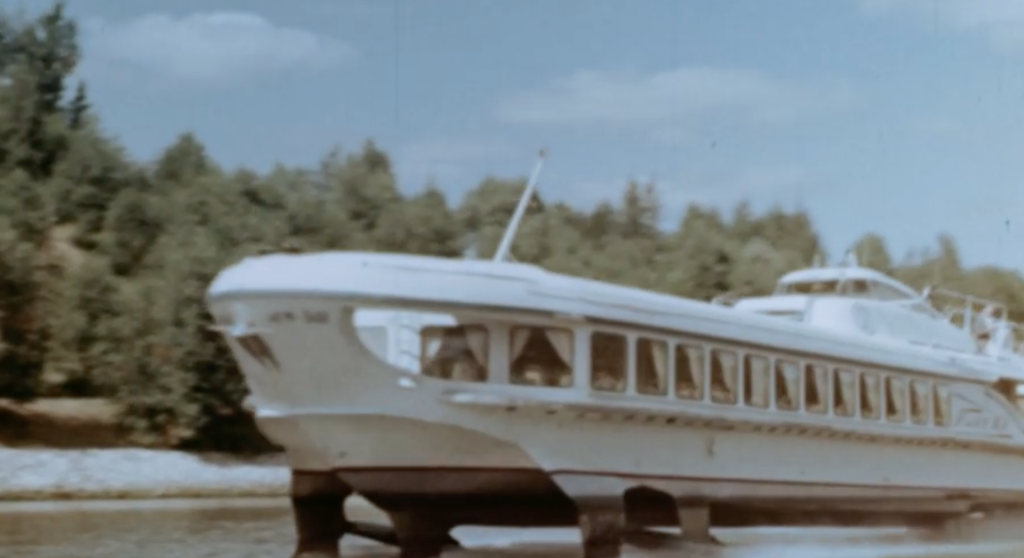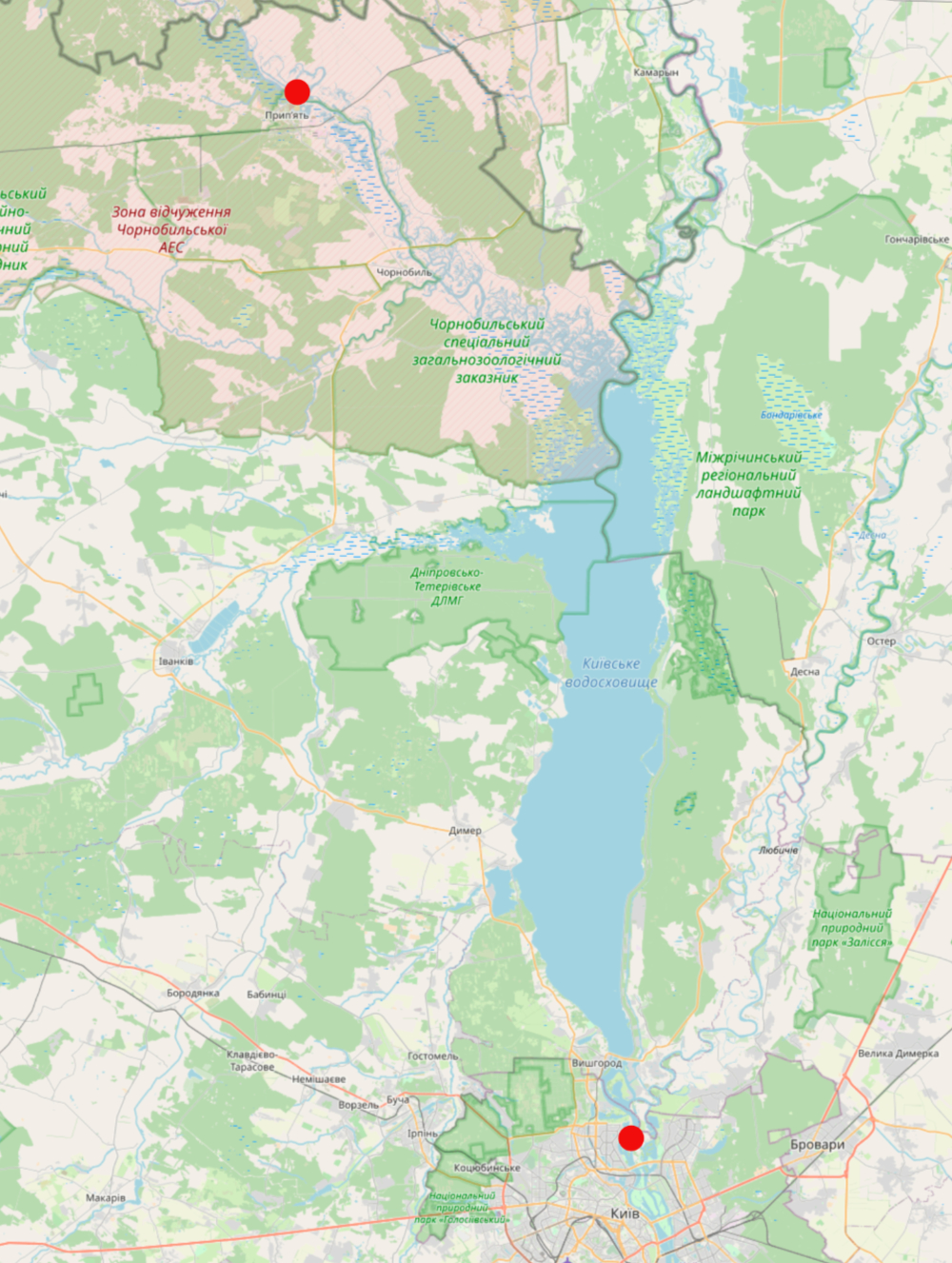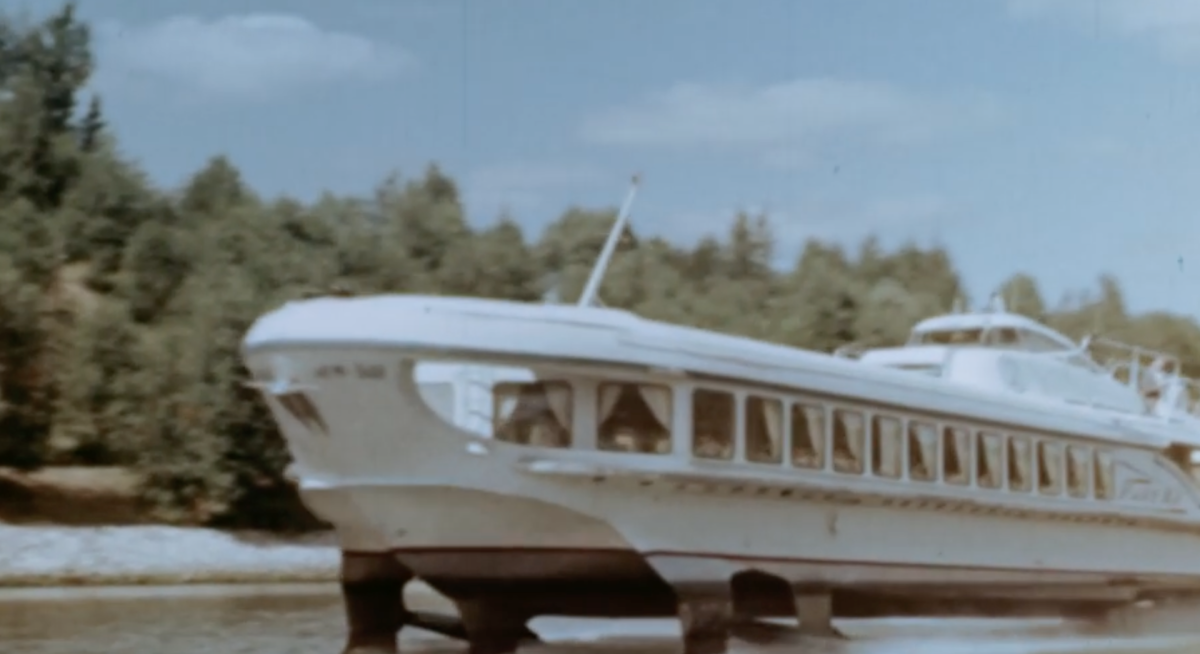Hydrofoils can reach speeds of up to 100km/h on the water. But they are mainly used in Russia. Why is it that this interesting mode of transportation had its greatest success in the days of the Soviet Union, and what does the future hold for high-speed hydrofoil vessels? Read more in this article.
Introduction
Pripyat – have you ever heard of this city? You probably haven’t, but you’ve certainly heard of its biggest employer: The Chernobyl Power Plant. Pripyat was home to about 49,000 people before the disaster on April 26, 1986. The population enjoyed all the amenities of a modern Soviet city: New houses, child care, hospitals, and an amusement park. And it offered its citizens another treat. A transportation system that many people, at least in the West, have never heard of: The hydrofoil.

Pripyat was founded as a city with the sole purpose of housing the workers of the Chernobyl power plant. The plant supplied the greater Kyiv region with power, so it was rather close to Kyiv, but still 100km away. If people wanted to get to Kyiv, they could take a train – or a hydrofoil. The hydrofoil would take just 2 hours to reach Kyiv. The journey began on the Pripyat River, a tributary of the Dnipro River, which flows through Kiev.

This was an ideal situation for a hydrofoil, where it could play to its strengths of high speed without the need to build extensive infrastructure. The Soviet Union was a leader in the use of hydrofoil technology, resulting in a number of designs with flashy names like Raketa, Meteor, and Kometa. But what is a hydrofoil and why was it so successful in the Soviet Union?
Hydrofoils
A hydrofoil is a cross between an airplane and a traditional ship. When standing still or traveling at low speeds, a hydrofoil is almost indistinguishable from a normal ship. You will only see the difference when the boat exceeds a certain speed. At that speed, the submerged wings under the keel of the ship begin to push the ship upward, lifting the keel out of the water. When the keel is lifted out of the water, all the drag that normal ships have to overcome is greatly reduced. This allows hydrofoils to travel much faster than traditional ships. The Raketa design reached 70 km/h, and some warship designs go even faster.
This picture shows a Soviet era “Kometa” hydrofoil, where we can see very well how the ship is surfing over the water:

While hydrofoils can reach high speeds on the water, the underwater foils add to the complexity of the ship, and thus to its cost. For this reason, all ships built to date have been rather small. This has limited their use to passenger ships and a few smaller vessel designs. In addition, the hydrofoil effect only works well on relatively calm waters – when the sea is rough, it is no longer possible to sail above the water’s surface.
Current Use
The invention of hydrofoils dates back to the 19th century, but it was not until after World War II that the technology was used on a large scale. Both the U.S. and Soviet navies built a number of warships, most of which have since been decommissioned.
Boeing produced only one series of passenger ships, the Boeing 929 Jetfoil. The Jetfoils were used in the USA, Great Britain and other countries, but are now mainly used between Hong Kong and Macau, and also between South Korea and Japan.

By far the greatest use – both in terms of different designs and total number of ships built – was in the Soviet Union. This was a huge country with many remote settlements. On the other hand, there was no shortage of rivers, so there was a need for a class of vessels that could travel fast and carry passengers where there was no other transportation infrastructure.
The first commercially successful type – the “Raketa” (rocket) – could carry about 64 passengers and was even exported to many Western countries. The following design, the “Meteor”, was even more successful, with more than 400 units built (source: Wikipedia). Other designs followed, such as the “Kometa” and the “Voshkod”.
Even today, many lines around the world still operate Soviet-era hydrofoils, especially in Russia, but also in Italy and Greece (source: Wikipedia).
Construction of new hydrofoils ceased after the collapse of the Soviet Union, but in recent years new ships have been designed in Russia, such as the Meteor 120R (source: Wikipedia).
Outlook
Hydrofoils had their heyday between 1950 and 1990. Since then, military use of the technology has all but disappeared, and the number of passenger services using hydrofoils has dwindled. However, there is still a niche for this interesting technology, especially in Russia. For this reason, we will continue to see new vessels being built in the coming years. There is still a future for this fascinating form of high-speed water transportation.
